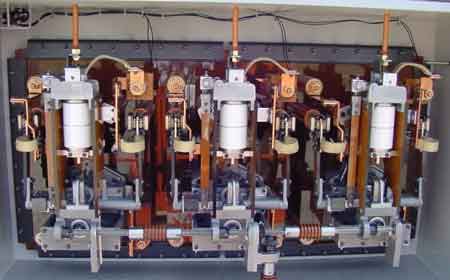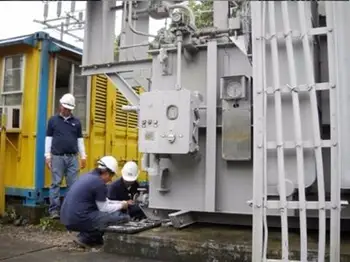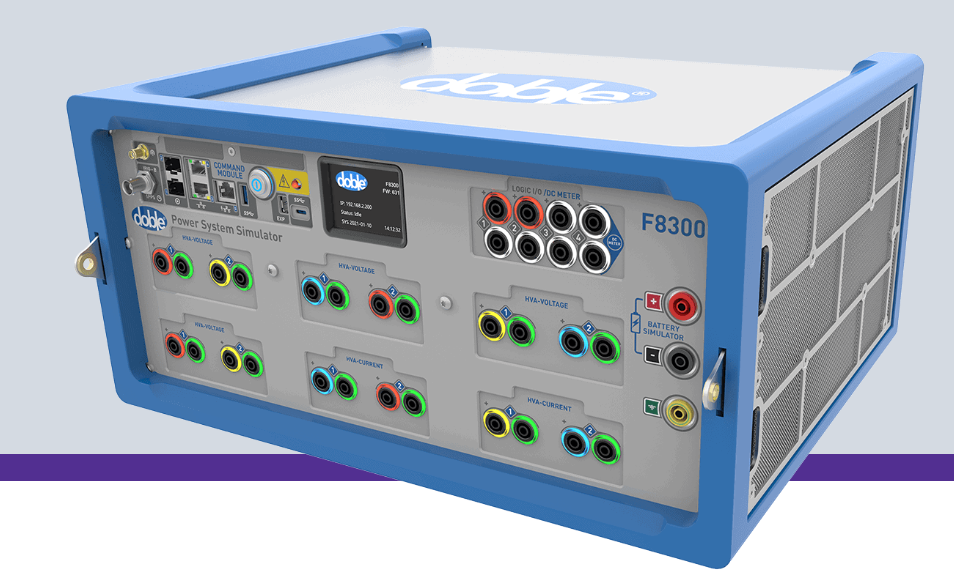Load Tap Changer Explained
By R.W. Hurst, Editor

Power Transformer Maintenance Training
Our customized live online or in‑person group training can be delivered to your staff at your location.

- Live Online
- 12 hours Instructor-led
- Group Training Available
Download Our OSHA 4475 Fact Sheet – Being Aware of Arc Flash Hazards

- Identify root causes of arc flash incidents and contributing conditions
- Apply prevention strategies including LOTO, PPE, and testing protocols
- Understand OSHA requirements for training and equipment maintenance
A load tap changer (LTC) regulates output voltage in power transformers without interrupting the load. It adjusts winding taps to maintain voltage stability, improve power quality, and support grid reliability under varying electrical load conditions.
What is a Load Tap Changer?
A load tap changer (LTC), also known as ULTC (under-load-tap-changer), is a critical component in electrical power systems, enabling efficient and reliable power distribution by regulating voltage levels in response to fluctuating demand. It:
✅ Adjusts transformer winding taps while energized
✅ Helps stabilize voltage in transmission and distribution systems
✅ Enhances power quality and reduces equipment stress
Understanding the operation and applications of power grids is essential for electrical professionals involved in designing, maintaining, and operating them. This article examines the key aspects of load tap changers, exploring their role in voltage regulation, integration within transformers and substations, and their contribution to grid stability. By reading this article, electrical professionals will gain an understanding of how load tap changers function, their importance in maintaining power quality, and the various types of tap changers used in different applications. For professionals concerned with diagnostics and asset longevity, see how condition monitoring enhances LTC performance and identifies degradation before failure occurs.
Electrical Transformer Maintenance Training
Substation Maintenance Training
Request a Free Training Quotation
Voltage Regulation: The Heart of Efficient Power Delivery
Voltage regulation is the cornerstone of a stable and reliable electrical grid. It's the process of maintaining a consistent output voltage despite fluctuations in the load. This is crucial because variations in voltage can damage sensitive equipment, reduce the efficiency of electrical systems, and even lead to power outages. An LTC plays a vital role in voltage regulation by adjusting the turns ratio of a transformer. By altering the number of turns in the transformer winding, a tap changer can precisely control the output voltage to ensure it remains within the acceptable range, even as demand fluctuates throughout the day. This dynamic adjustment capability is essential for maintaining power quality and preventing costly disruptions to consumers and businesses.
Electricity Today T&D Magazine Subscribe for FREE

- Timely insights from industry experts
- Practical solutions T&D engineers
- Free access to every issue
Transformer: The Workhorse of Power Distribution
Transformers are essential components of electrical power distribution systems, responsible for efficiently transferring electrical energy between different voltage levels. They work on the principle of electromagnetic induction, where a changing magnetic field in one coil induces a voltage in another. An LTC is often integrated into distribution transformers, particularly those operating at higher voltages. By adjusting the turns ratio of the transformer, tap changers allow this type of transformer to adapt to varying load conditions and maintain the desired voltage level on the secondary side. This ensures that electricity is delivered to consumers at a safe and consistent voltage, regardless of fluctuations in demand. For a deeper dive into the internal structure of tap-equipped units, our guide on the construction of transformers outlines the key components and winding arrangements involved.
Comparison Table Between On Load Tap Changer and NLTCs
| Aspect | On-Load Tap Changer (OLTC) | Off-Load Tap Changer (NLTC) |
|---|---|---|
| Operation Mode | Tap change under load | Tap change with transformer de-energized |
| Complexity | High (motor drives, arcing contacts, resistors) | Low |
| Cost | Expensive | Cost-effective |
| Maintenance Requirement | Regular inspections, oil sampling, mechanical wear | Minimal |
| Application | Transmission, substations, critical infrastructure | Small/medium distribution transformers |
Power Distribution: A Complex Balancing Act
Power distribution is a complex network that delivers electricity from generation sources to end users. It involves a delicate balance between supply and demand, ensuring that power is available when and where it is needed. To maintain this balance, distribution transformers are strategically placed throughout the grid to step down high-voltage electricity to lower voltages suitable for residential and commercial use. Tap changers within these transformers are crucial in managing voltage fluctuations caused by varying load demands. Adjusting the transformer's turns ratio helps tap changers ensure a consistent and reliable power supply, even during periods of peak demand or unexpected outages. Discover how LTCs operate within different transformer types by exploring our 3-phase transformer overview, ideal for both industrial and utility applications.
On Load Tap Changer: Ensuring Seamless Power Flow
An on-load tap changer (OLTC) is a specialized device designed to adjust the tap position of a transformer without interrupting the flow of electricity. This is crucial for maintaining a continuous power supply, particularly in critical infrastructure and industrial applications, where even brief interruptions can be costly or disruptive. OLTCs achieve this seamless operation through a complex mechanism that involves switching between different taps while ensuring a smooth transition and minimizing arcing. This enables dynamic voltage regulation in response to changing load conditions, ensuring a stable and reliable power supply with no interruptions. Maintaining voltage stability across the grid requires reliable equipment—learn how distribution transformers use tap changers to respond to changing load demands.
Substation: The Hub of Power Distribution
Substations are critical nodes in the power distribution network, serving as central points where high-voltage electricity is transformed and distributed to various feeders. They house a variety of equipment, including transformers, circuit breakers, and protective relays, all of which work together to ensure the safe and reliable delivery of electricity. Tap changers, often integrated within substation transformers, play a key role in regulating voltage levels within the substation and across the distribution network. By adjusting the transformer's turns ratio, tap changers help to maintain voltage stability and prevent voltage fluctuations from propagating through the grid, ensuring a consistent and reliable power supply to consumers. To understand how LTCs support grid reliability, see our article on electrical substation transformers, which explains their role in voltage transformation and regulation.
Frequently Asked Questions
What are the disadvantages of a Load Tap Changer?
While OLTCs offer significant advantages, they also have some drawbacks. They are generally more complex and expensive than off-load tap changers, requiring specialized maintenance and increasing the potential for mechanical failure. The switching process can also introduce transient voltages and harmonics into the system, potentially affecting power quality.
What is the principle of a Load Tap Changer?
OLTCs operate on the principle of minimizing the interruption of current flow during tap changes. This is achieved through a complex mechanism involving a diverter switch and transition resistors to temporarily carry the load current while the tap position changes. This ensures a smooth transition between taps without de-energizing the transformer.
What is the range of an on-LTC?
The range of an OLTC refers to the number of tap positions and the corresponding voltage adjustment range. This can vary depending on the specific design and application, but typical OLTCs offer a range of plus or minus 10% to 20% of the nominal voltage.
Test Your Knowledge About Utility Transformers!
Think you know Utility Transformers? Take our quick, interactive quiz and test your knowledge in minutes.
- Instantly see your results and score
- Identify strengths and areas for improvement
- Challenge yourself on real-world electrical topics
What is an on-LTC provided with?
OLTCs are typically provided with various auxiliary components, including:
-
Diverter switch: Used to temporarily redirect current during tap changes.
-
Transition resistors: Limit the current flow during tap transitions.
-
Motor drive mechanism: Controls the tap changer operation.
-
Control and monitoring system: Allows for remote operation and diagnostics.
These components work together to ensure safe and reliable tap changing operations while maintaining a continuous power supply.
Related Articles








